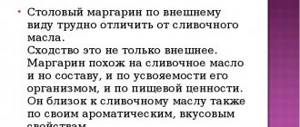There are many building materials that are hazardous to health to one degree or another. Of course, not every person will study data on the dangers of each building material before building a house or bathhouse. But this is not necessary, the main thing is to know about the most harmful ones, which are gradually being banned in different countries . One of these is asbestos.
What is asbestos
[email protected]
This building material consists of fine fibrous minerals. It tolerates high temperatures well, withstands fire, and is very strong and elastic. Now in construction stores and markets you can find both individual sheets and see this substance as part of cement mixtures and other building materials.
Properties of asbestos
It has found wide application in the construction industry due to its special properties:
- Low electrical conductivity
- Heat resistance
- Resistance to radiation exposure
- Gas absorption capacity
2 types of material
- Chrysotile asbestos is a multilayer silicate that withstands alkali well. It is this substance that can most often be found on the Russian market.
- Amphibole - despite similar physical properties to the previous type, it has its own structure. It is not used as often as the first one, since it is significantly inferior in quality. In addition, many countries have banned its use because it emits substances hazardous to health.
They also differ in color, composition and length of the fibrous component, which subsequently affects wear resistance and durability.
Cladding with cladding
This option is practically no different from the previous one, however, if you don’t know how to decorate the wall behind the stove in the steam room in such a way as to preserve the beauty of the room while creating safe conditions, then this option is undoubtedly for you. Protect the walls using heat-resistant decorative materials laid on thermal insulation.
The finishing around the stove in the bathhouse can be done with the following materials:
- Clinker tiles are made from baked clay. It is characterized by high strength, heat resistance and durability. One of the advantages of this option is also the rich color palette, which includes not only black and white tones, but also blue or green colors;
- Terracotta tiles are also made from clay, but they are inferior to the previous option in terms of density and the number of possible colors;
- Soapstone is a good cladding option for a bathhouse, made from rocks of green and grayish shades. Has good heat resistance and strength;
- Tiles are ordinary ceramic tiles, characterized by good heat resistance and a pattern on their surface;
- Porcelain tiles are heat-resistant tiles that imitate natural stone or wood.
The tile will not dissipate heat, protecting the walls from fire, so it cannot be mounted directly on the wall. We recommend using the following design:
- Wall;
- Clearance for ventilation;
- Fireproof material;
- Tiles (the distance from the tile to the stove must be at least 15 cm).
Such a “pie” will create reliable protection for walls from heat, preserving the beauty of the room.
One of the following options can be used as a fireproof material:
- Fireproof drywall - made from the same materials as regular drywall, but using fiberglass;
- Minerite slabs for baths are absolutely not exposed to moisture and heat.
- Glass-magnesium sheet - plates made of fiberglass and magnesium binder. Excellent resistance to heat, moisture and noise.
This option will perfectly protect your bathhouse from the possibility of fire, and will also insulate the room, preserving its aesthetic component.
Where is it used
If you study the question of what asbestos is needed for, you will notice that it is used in various fields, including industrial production and construction.
Construction
Unsplash
In installation work, its fire resistance and thermal insulation are especially valued. Therefore, very often when installing wall panels or laying floors, asbestos boards or wool made from the same substance are used.
Mechanical engineering and metallurgy
Cables and various metal and concrete structures are usually treated with this mineral in the form of spraying. This is how they acquire fire-resistant properties.
In addition, in some houses, cement pipes with the addition of this substance are installed. It is thanks to him that they become stronger and more durable.
Chemical industry
Asbestos has also found application in the chemical field, where it is used to make various plastics, paper and paint and varnish products.
Textile industry
Here this mineral is used in the manufacture of fabrics for workwear. It is used to make protective gloves, helmets and suits. In addition, brake flanges and pipe seals are also made with its addition.
A little history
Natural flat-shaped slate slate appeared in ancient times, at least in the Middle Ages. Rich homeowners covered buildings with it, protecting them from rain, wind and snow, rightfully considering the material durable and practical. At the beginning of the 20th century, natural slate, despite its high performance characteristics, was replaced by a cheaper analogue - asbestos-cement slate, which quite quickly conquered first the European and then the Russian market.
The Austrian engineer Ludwig Gatchek invented and patented the technology for producing asbestos cement. It was thanks to him that in 1902-1903. The first enterprise producing slate appeared. Very quickly, factories opened in France, Italy and the Czech Republic. And already in 1908. production of roofing material began in Russia. Healthy competition has contributed to a gradual reduction in the cost of asbestos-cement sheets and an increase in their popularity among developers for many decades. By the way, the material was originally called ethernit, which in translation sounds like “eternal.”
Thanks to slate, the problem with new roofs was solved. During the demolition of houses, sheet coverings were often moved and are still being moved to other objects.
Is it harmful to health?
There is a popular belief that building materials are extremely dangerous to human health due to harmful fumes. There is another version that speaks of its safety, which has not yet been definitely confirmed. Let's look at why asbestos is dangerous.
Indeed, prolonged contact with the material during installation can have a detrimental effect on the body. For example, occupational diseases associated with this fibrous substance include chronic respiratory diseases, fibrosis and even lung cancer.
The occurrence of these diseases is due to the fact that when inhaling dust particles from asbestos, its fibers are not removed from the lungs, but settle there for life. Thus, they gradually destroy the organ and harm health. However, you can only get sick if a person stays in a place with such dust for a very long time.
The substance only when combined with cement does not emit any harmful fumes and is completely safe for humans. But it is still better to refrain from using it in a bathhouse, since with periodic heating it can crumble over time. And this will lead to the spread of dangerous dust in the air.
How to protect the walls of a bathhouse from the heat of a stove - technologies and materials
When planning the construction of a bathhouse, it is important to remember to create safety indoors.
First of all, this concerns fire safety. By melting the bathhouse, the stove can be heated to 300-400°C, which significantly exceeds the combustion temperature of the wood from which the bathhouse is most often built. All the heat from the stove is released into the room, but the main heat is absorbed by nearby walls, which leads to their charring and fire. It is extremely important to avoid such consequences, so in this article we will tell you in detail how to insulate a stove in a bathhouse from the wall.
How to replace asbestos
Now there is a huge selection of materials that have the same properties and are well suited for replacement.
Insulation in a roll
He makes three types of mineral wool:
- Basalt wool
- Glass wool
- Slag
Each type is suitable for certain types of work. In accordance with the instructions, select exactly the analogue that you need.
This building material is heat resistant and retains heat well.
Foam glass
This material is lightweight, durable, fire resistant and waterproof. It provides not only thermal insulation, but also has the ability to muffle sound.
Fire-resistant drywall (GKLO)
If it is necessary to insulate the wall in the bathhouse, which is located near the stove, you can use gypsum plasterboard. This fire-resistant material can also withstand high temperatures and does not emit harmful substances when heated.
Minerite
Minerite is also produced specifically for the construction of baths. It is installed between the stove and wooden walls. It can withstand about 650 degrees and does not burn or rot.
Brick screens
The furnace fence in the steam room can also be made of brick. A brick screen can be installed on all sides of a metal furnace, forming a protective lining. Also, such a screen can only be installed between the flammable surface and the stove, representing a protective wall.
Having decided to lay such protection, use solid fireclay bricks, for the binding of which you can use clay or cement mortar. Typically, half-brick masonry (120 mm) is used, but due to lack of material, quarter-brick masonry (60 mm) is suitable. When using the latter installation method, remember that the thermal insulation properties of such a screen are reduced, so the distance to the wall should be increased.
This finishing of an iron stove in a bathhouse is also carried out in compliance with certain rules:
- In the lower part of the shield it is necessary to provide special openings that will ensure air convection between the furnace wall and the brick;
- The height of the brick wall should exceed the height of the stove by 20 cm, but it is often built right up to the ceiling;
- Maintain a distance of 5-15 cm between the stove and brick screens;
- There should also be a distance of 5-15 cm between the flammable surface, for example, a wall and a brick protection.
Is asbestos harmful to human health?
Until the seventies of the last century, asbestos was widely used in a variety of industries, primarily in construction. Then attention was drawn to its health hazards. As a result of numerous studies, it was included in the list of carcinogens of the first category according to the IARC classification. At the end of the twentieth century, the use of asbestos in European countries sharply declined, and since 2005 the use of this material has been prohibited in most Western countries. In Russia, it is still one of the most popular materials.
What's the matter? Is asbestos harmful to health and how dangerous is contact with it in a domestic environment?
This concept hides a whole group of materials. Therefore, in order to find out how harmful this substance is to health, you must first understand: what is asbestos? This is a group of materials from the class of silicates that are of natural origin. In Russia, large deposits of chrysotile asbestos are located in the Urals.
The mineral has a special fine-fibrous structure, the microscopic tubes of which form flexible bundles. Thanks to this, it has excellent technological properties. In terms of strength, the material is comparable to the best grades of steel, has low electrical conductivity and high heat resistance. Chrysotile asbestos is chemically inert: it does not dissolve in water, does not deteriorate under the influence of oxygen, solar radiation, or ozone. The material is characterized by high fire resistance. When chrysotile is processed, the fiber fluffs up and acquires a high ability to absorb other chemicals.
The essence of the question about the dangers of asbestos is that there are two types of material. They differ in fiber structure and chemical composition. Amphibole asbestos is more hazardous to health, so its extraction and use is currently prohibited in all countries. Previously, this material was mined mainly in Europe, the USA and Australia, so the main foreign studies on its dangers relate to amphiboles, that is, doubtful and unclear.
Therefore, further, we will consider the issue and impact on the body only of chrysotile asbestos, which is less dangerous to health, but still belongs to recognized carcinogens, albeit with a special mechanism of action.
Where is asbestos used?
Asbestos is widely used in industry due to its unique properties and low cost. It is used in production:
- roofing products (slate, etc.);
- facade slabs;
- wall products (foam concrete, chrysotile cement sheets);
- thermal insulation materials;
- asbestos products (filters, friction parts, brake bands);
- rubber products;
- sealants;
- protective layers in tunnels;
- bricks;
- various construction, lubricating, adhesive, asphalt concrete and other mixtures.
The health hazards of asbestos depend on the degree of exposure of the respiratory tract to asbestos dust.
Protective materials for wooden structures
Due to the fact that the chimney and stove heat up quickly, a fire may occur. Moreover, according to tradition, the material for the bathhouse is wood. Back in the old days, it was customary to insulate the walls, ceiling, stove, chimney with an asbestos layer, clay and other available materials that conduct thermal energy rather poorly and are resistant to elevated temperatures.
So how to cover the stove pipe today? Insulation of the chimney structure is necessary both for fire safety and protection from condensation, so that cooling occurs more slowly and the smoke exhaust system lasts longer.
It is a mistaken belief that several metal sheets used to cover the ceiling around the chimney will be enough to insulate from fire. After all, metal also heats up quickly, so it will not protect against fire, and it will also not be suitable as a heat insulator.
Red brick is not always needed for pipe lining, although it is endowed with excellent thermal insulation properties. The reason is that such a design does not match the design of every bathhouse.
To better understand how to wrap a chimney pipe against fire, consider two options for insulating materials in the form:
The effect of asbestos on the human body
Chronic asbestos poisoning takes a long time to develop and is caused not so much by the mineral itself, but by the structural damage it causes as it accumulates in the lungs.
When inhaling asbestos dust, which is formed during the production of this material or the mechanical destruction of products made from it, some of the fibers enter the lungs. Due to the fact that chrysotile asbestos dissolves even in a slightly acidic environment, its accumulation in the lungs requires a significant dose of dust and a long period of exposure to it on the body. And even in this case, the harm of asbestos to a person may take ten or more years to appear.
The most likely development is bronchitis caused by mechanical irritation of respiratory tract tissues by dust microfibers. It is also possible to develop asbestosis - in this disease, dust settled in the lungs causes scarring changes in the lung tissue.
How is asbestos harmful to health in terms of cancer? It has been established that it itself is not a carcinogen, but belongs to the group of promoters - substances that promote the effect of carcinogens on cells. It is associated with a rare cancer - mesothelioma.
According to research by Russian scientists, the risk of cancer in production due to chrysotile asbestos is 1 in 100 thousand. This figure is several orders of magnitude lower than for the group of smokers (8800 cases per 100 thousand). After the development of new norms and sanitary rules, subject to compliance with MPC (maximum permissible standards), not a single case of asbestosis has been recorded at asbestos mining enterprises in Russia for 20 years!
Causes of the disease
It is still not clear how exactly asbestos dust causes lung diseases. Most likely, the development of pathologies occurs due to injury to the mucous membranes, which causes hyperplasia, metaplasia and proliferation of the epithelium. Manifestations of metaplasia are associated with the chemical composition of certain types of mineral containing kieselguhr. There are opinions that the occurrence of oncological diseases of the bronchopulmonary system is promoted not by the chemical properties of asbestos, but by severe bronchiectasis changes that occur as a result of constant inhalation of dust.
However, in any case, the disease is based on inflammatory processes of the respiratory tract in the form of chronic nasopharyngitis and bronchiolitis, caused by mechanical and chemical exposure to asbestos dust.
Take care of yourself and your loved ones! Do not be exposed to harmful dust!
Is asbestos or asbestos dust harmful to health? This topic has been exciting the minds of ordinary citizens for decades. Should the roof of a country house be covered if it is covered with slate and some of the world and Russian facts.
This material brings together reviews backed by years of research and hard facts regarding slate and asbestos.
Are there toxic building materials and is asbestos-cement slate one of them?
There is no official list of toxic building materials in the Russian Federation. Nevertheless, the building materials market is under control, and a prerequisite for a particular product to hit the shelf is the presence of a hygienic certificate of product conformity. This document is issued by Rospotrebnadzor services after checking the compliance of products with established hygienic standards and regulatory and technical documentation approved by Rosstandart. Thus, at least two government agencies monitor the safety of building materials.
If we talk about international experience, the use of hazardous chemicals and pesticides is regulated by a special international agreement - the Rotterdam Convention. But even in this document, chrysotile asbestos (this is the form of the mineral used today in industry and production) is not subject to a ban and is not called toxic.
Is asbestos harmful to health?
This paragraph should begin with the fact that asbestos is different from asbestos. In many ways, it was the differences in the physical and chemical properties of different forms of the mineral that became the basis for whipping up unfounded fears among the population.
- Thus, chrysotile (white) asbestos does not pose a health threat when used in a controlled manner. Even if it enters the body, its fibers dissolve and are excreted within a few days.
- But amphibole (blue) asbestos is resistant to acidic environments and has a long fiber length. Once in the lungs, its particles remain in the body for a long time and can cause diseases.
However, in Russia and the CIS countries, amphibole asbestos has never been used for civilian purposes. So even the old slate that may cover your country house does not pose a threat.
An international group of biological researchers from Switzerland, Great Britain, Germany and the USA in 1999–2010 studied the duration of elimination of various fibers from the body. According to the research results, the period of dissolution and removal of chrysotile asbestos fibers was 0.3–11 days.
Russian-made slate is resistant to alkaline environments, but decomposes in acids with the formation of amorphous silica. This is what distinguishes it from prohibited asbestos.
Asbestos is used in Russia for production
- paper, cardboard,
- filters,
- tarpaulin,
- fire-resistant fabrics from which suits for firefighters are sewn,
- asbestos cement pipes,
- asbestos-cement corrugated and flat sheets,
- asbestos cords and sheets, much more.
Prevention of poisoning
Today, the use of amphibole asbestos in all forms is prohibited.
The technology of spraying asbestos on metal structures has been withdrawn from use.
Chrysotile asbestos is recognized as a safe material, subject to its controlled use. The list includes:
- the use of high-density products that do not crumble when dry;
- control of the level of asbestos fibers in the work area in production (MPC 1 vol/ml);
- dust and waste must be stored in sealed containers and disposed of under special conditions;
- workers at risk are systematically subjected to medical examination.
In domestic conditions, be sure to follow the recommendations on sanitary standards:
- asbestos-containing building materials must have an appropriate certificate;
- wall panels and partitions made of this material are coated with two or three times;
- in rooms where wet cleaning and disinfection are carried out, asbestos products must withstand the appropriate regime of exposure to disinfectants;
- The use of asbestos in ventilation ducts is unacceptable.
Despite the fact that asbestos is classified as a carcinogenic material according to its hazard class, its main harm to the body is the development of asbestosis due to prolonged inhalation of dust in large quantities. This disease manifests itself in organic changes in the lung tissue (formation of scars and nodules). If safety precautions and sanitary standards are observed, this building material does not pose a threat to health!
Non-combustible wall coverings
The second option for protecting walls from fire is special sheathing, which is made from non-combustible materials. The working element of this protection, which reflects IR rays that are dangerous for flammable surfaces, is a reflective material, for example, stainless steel.
There are also decorative finishing options that preserve the aesthetic purity of your bath. One of the advantages of this method is that protecting the walls in the bathhouse from the stove will not only prevent fire, but also retain heat inside the room.
Asbestos in the construction of baths.
Rate this post
Hi all! Today there will be an article about misunderstanding and anger. It will be devoted to one interesting building material, which, out of ignorance or out of economy, people still use. Namely about asbestos.
I thought that many people had forgotten about it, but those who remember and ask about it, we talk about it, and they buy alternatives. BUT! An interesting thing happened. A builder and a customer came to the store and started asking for asbestos boards. In response to our monologue that it was harmful, the builder waved it off and began to tell the client that it was simply not profitable for us to sell it, since it was cheap. Ladies and Gentlemen. In large stores, where decent people work, there are many product alternatives at different prices. And yes, having worked as a salesman, I can agree that an expensive product is better than a cheap one by 70 percent. As a result, the builder began to prove to me that we, the whole world and other builders, are mistaken, and he is the only one right. I began to name the names of his clients, for whom he built baths, among whom were quite influential people in our city, to which I had to unprofessionally (rather rudely) put the person in his place.
So let's figure out what asbestos is. Wikipedia tells us: Asbestos (Greek ἄσβεστος, - indestructible) or mountain flax is the collective name for a number of fine-fiber minerals from the class of silicates, which in nature form aggregates consisting of the finest flexible fibers. It is used in a wide variety of fields, such as construction, the automotive industry and rocket science.
It seems that everything is not bad. Read on:
It is a category 1 carcinogen according to the IARC classification.
Is asbestos harmful?
Asbestos dust is carcinogenic if inhaled. You can verify SanPiN 1.2.2353-08 “Carcinogenic factors and basic requirements for the prevention of carcinogenic hazards”
Asbestos dust causes great harm. During work, namely drilling, cutting and other activities, it releases a lot of dust, which, when it enters the respiratory tract, settles in them and is not removed by anything. This dust causes lung cancer and there is also a disease called Asbestosis.
Nephron - Own work, CC BY-SA 3.0, https://commons.wikimedia.org/w/index.php?curid=7597853
The photo shows the consequences of working with Asbestos. High magnification micrograph of pulmonary asbestosis, with characteristic glandular bodies and interstitial fibrosis. Lung biopsy. H&E stain.
Based on the results of comprehensive scientific studies of carcinogens, the International Agency for Research on Cancer has classified asbestos in the first, most dangerous category of the list of carcinogens for which there is reliable evidence of their carcinogenicity to humans.
It can be argued that asbestos itself is not harmful, but its dust is. Those. If you cut it in a respirator and twist it in a bathhouse, and then clean it up, then everything will be fine. Not really! Don't forget that any structure is alive and moves. Especially the bathhouse. It doesn’t matter what material it is made of, there are still small movements during which the asbestos will rub and release dust, and the microclimate of the steam room will do its job to move it in the steam room.
Dust is also treacherous. It does not manifest itself immediately, accumulates for years, and then deals a crushing blow to the body. In Europe, the use of asbestos has been banned since 2005.
What do we get in the end? Using asbestos in the construction of baths, you can collect stones at the mining and processing plant and put them in the heater. It will not be worse.
Friends, we are building a bathhouse to heal the soul and body. Let's not skimp on our health and use environmentally friendly materials. We are already surrounded by harmful substances, let’s not aggravate our situation with our own actions. In addition, there are alternatives in different price segments. Peace and goodness to everyone!
What is asbestos? Properties of asbestos. Application of asbestos
What is asbestos?
What associations do you have with the word asbestos? Most likely, you will think that it is something like cement. That's almost true. This is one of its components.
In fact, it is such a white mineral, a stone. Or rather, it is a whole group of fine-fiber minerals. Just for ease of use, they are called by a general designation - asbestos. It is used in many areas. It's very convenient. But it would be used even more often if it did not raise concerns about its effect on the human body.
The photo shows asbestos fibers
It has been known since ancient times. Even in ancient times, its beneficial properties were used. Even the ancient Egyptians knew that asbestos was beneficial in everyday life and beyond. The powers that be often entertained themselves by demonstrating the properties of the mineral. For example, the European ruler Charles the Fifth surprised his guests with a miracle tablecloth woven from asbestos fiber.
By throwing it into the fire, he demonstrated its fireproof qualities. Only the remnants of food burned, and the tablecloth itself remained unharmed. Peter the Great was later played in a similar way, thanks to whom asbestos production began in Russia.
Asbestos can be chrysotile and amphibole. Chrysotile or serpentine is a magnesium silicate. It is used most often. It is alkali-resistant and durable.
It does not burn at all, is very elastic and strong like nothing else. If we look at a photo of asbestos, we will see what appears to be a layered tubular stone. For the most part, when we talk about asbestos, we are talking about chrysotile.
The photo shows an asbestos stone
This type is less harmful to health than the other. But still, many are concerned about its toxicity. Now the world industry is trying to replace it, but, unfortunately, it is not so easy to find an analogue. It turns out to be either very expensive or simply unreliable.
It is very beneficial in operation and its properties are irreplaceable. Amphibole is a complex silicate. If we look at his photo of asbestos, we will see what appears to be tubular quartz. Its list of useful properties is much shorter than that of the first type.
It is mainly used only where it is necessary to resist acids. Therefore, it is in great demand in the chemical industry. The smallest particles of amphibole look like small needles that stick into any soft surface. Because of this, this is the most hazardous type of asbestos to health.
Asbestos production
Asbestos mining in Russia has been going on for a long time. Under Peter the Great, this industry was just born. It reached the peak of its development during Soviet times. Now in our country it is developed like nowhere else. Russia occupies one of the first places in its production.
Mineral asbestos
Asbestos is mined all over the world, but it is especially developed in America and Africa. Mining occurs in quarries or tunnels. The mineral is located in the form of veins. When hit with a hammer, it breaks into fibers.
Asbestos is divided by grade. The longer the fiber, the higher the grade. Higher grades are used in the production of fabrics. The rest are sent to the construction industries.
Asbestos is produced in mining and processing plants. They mine mainly chrysotile asbestos. Since its properties are most in demand.
Application of asbestos
Asbestos has heat-resistant, fire-resistant, anti-radiation properties. It is flexible, durable, heat resistant and resilient. Indispensable in many situations and processes.
We are not even always aware of how often it occurs in our lives. Almost at every step. It is part of the protective suits of many workers and construction professions. It is found in paper and cardboard.
Most building materials contain asbestos. It is widely used in the chemical industry and military. Previously, equipment, lamps, shirts were made from it, and even the finest lace was woven.
The photo shows sheet asbestos used in construction
It is now used to make many fabrics and coverings. Widely used in the automotive industry - in the manufacture of brake pads, linings, gaskets and other parts.
Roofing and pipes for houses are made from asbestos; drinking water passes through them. In this state, the mineral cannot have a negative effect, since, we remember, it does not dissolve in water and does not react with it.
Also, the slate on our roofs is also made from asbestos. There are many manufactured products that skillfully use the beneficial properties of fiber, bypassing negative factors.
Asbestos price
In our country, the production and extraction of this mineral is very developed. Therefore, buying asbestos is not difficult. The most accessible is chrysotile. It is sold in slabs, sheets, and strips.
Sheet asbestos or, as it is also called, asbestos cardboard or asbestos cardboard for short, can be bought in any city at a very reasonable price. It is used to insulate and seal communications and devices.
Asbestos is also sold in powder form. This is called fluff or fluff. It can be found from 50 rubles. per kg. Sheet asbestos can be purchased at a price of 100 rubles. But the price of asbestos varies and you need to look for the best option when purchasing.
The photo shows an asbestos cord
Asbestos stores provide a wide selection of products. You can buy asbestos sheets, fluff, asbestos pipes, cords, asbestos-cement sheets, parts, etc. The sale of asbestos is booming in Russia.
Harm from asbestos to health
Unfortunately, this useful mineral has some negative properties. If you do not use it carefully, do not follow safety precautions and neglect your health, then in some cases it can cause harm to your health.
It is not dangerous on any kind of coating, as far as building elements are concerned, but only when these elements are covered with paint or something else. As soon as it begins to crumble or crumble, everything must be done to prevent its further spread.
Asbestos dust accumulates in the lungs and causes the development of cancer cells
Asbestos has the property of not dissolving in water, and since the human body mainly consists of it, when inhaling the smallest particles of dust, the moisture in the body cannot cope with foreign particles and you can get big problems with the lungs.
It has the ability to accumulate in the respiratory tract and cause all kinds of diseases. According to recent studies, asbestos dust promotes the formation and proliferation of cancer cells.
Although, now there is another point of view. Some researchers are trying to rehabilitate chrysotile asbestos. They argue that particles of this dust are broken down in the human body due to the action of protective mechanisms.
But this does not apply to the amphibole species. Its extraction is practically prohibited throughout the world. Asbestos is a useful mineral. But it must be used with caution.
Asbestos is different from asbestos...
Translated from Greek, “asbestos” means “inexhaustible, unquenchable, undiminished.” This natural material also has another name - “mountain flax”, assigned, apparently, because it is capable of splitting into. the thinnest long fibers up to 0.5 microns thick. And in the Urals, asbestos has long been called “stone tow”, from which they wove napkins and tablecloths that do not burn in fire. The concept of “asbestos” unites a large group of natural fibrous materials: serpentines (chrysotile asbestos) and amphiboles (crocodolite, maosite, anthophylite, rhodusite, actinolite). They differ significantly from each other in composition, crystalline structure, physicochemical properties, as well as features of biological effects on the human body. All these materials have a risk factor, especially in conditions of high dust levels in the air in production areas. But compared to other types of asbestos, the biological activity of chrysotile asbestos is much lower, which is why it is used today in the production of asbestos-containing products.
What kind of material is this? This is one of the types of asbestos that is most widespread throughout the world (up to 95%), but its largest deposits are located in Russia. The share of Russian asbestos on the world market is 38% (Canada is in second place - 17%). Russian asbestos is exported to 35 countries and accounts for 45% of what is mined in the country. 55% is used in the domestic market. Chrysotile asbestos has a unique set of useful properties, such as high strength (tensile strength more than 3000 MPa), elasticity, fire resistance (melting point 1450-1500 ° C), alkali resistance, elasticity and spinnability, low electrical conductivity. It belongs to radiation-protective materials, has a high sorption capacity, and is not subject to decay processes.
The areas of application of chrysotile asbestos are very wide. Today there are more than 3,000 products for various purposes in which chrysotile asbestos is used as a component. Approximately 15% of asbestos from the total composition of the source material can fundamentally change the physical and mechanical characteristics of the product. For example, the resistance of asbestos to high temperatures allows it to be used as a material for firefighter clothing, metallurgists, for protecting cables and premises from fire, for thermal insulation of muffle furnaces and heating devices. High mechanical strength ensures its use in the manufacture of brake pads and friction linings. Resistance against decay, the ability to retain bacteria, harmful substances and radiation allow the use of asbestos in filters in the food, nuclear, and pharmaceutical industries. The special binding ability, elasticity and strength of chrysotile asbestos fibers are properties necessary in the manufacture of asbestos and textile products, and for the reinforcement of plastics. Stability of the chemical composition, elasticity and strength are necessary in the manufacture of stamp paper, banknotes, etc.
Furnace pipe insulation: teploizol
This is a unique material, the structure of which includes foamed polyethylene, located between a pair of sheets of foil. Using thermal insulation, you can qualitatively insulate a chimney, and do it yourself.
The thickness of the thermal insulation varies from 2 to 10 mm, and the thicker the material, the greater its resistance to high temperatures.
The top layer of foil serves as reliable protection for the pipe from significant overheating. Using wire or adhesive tape, a metal craftsman attaches thermal insulation, which is then wrapped around the chimney.
About the impact of asbestos on human health.
After the asbestos craze in the mid-20th century. this material has been persecuted: the “asbestos war” has been going on in the world for 20 years now. Abroad, passions were especially heated in the late 1980s, when large industrial enterprises producing asbestos products were shut down, classes at universities were stopped, and asbestos products in institutions and residential buildings were replaced with artificial ones. The reasons for the anti-asbestos campaign were related to the increase in morbidity and mortality due to the uncontrolled use of asbestos in the 1940s-1970s. For example, in Western European countries, amphibole asbestos was used in large quantities, which has a higher biological aggressiveness compared to chrysotile asbestos. However, in the end, many scientists, both in Russia and around the world, came to the conclusion that chrysotile asbestos, provided that acceptable concentrations are observed, does not pose a serious threat to human health. If established norms and rules are followed, the risk of cancer is 1 case per 100 thousand people (for comparison: cancer mortality among smokers is 8800 cases per 100 thousand people). In recent decades, significant measures have been taken around the world and, in particular, in Russia to improve working conditions. At asbestos mining enterprises, where the approved maximum permissible concentration (1 volume/ml) is not exceeded, not a single new case of asbestosis has been identified for more than 20 years. Thus, the forecasts of opponents of chrysotile asbestos, who predicted a continuous increase in asbestos-related diseases, did not come true, because they were made without taking into account progressive changes in technology and technology.
Today, the level of occupational diseases at enterprises associated with the production of chrysotile asbestos and asbestos-containing materials is lower than at many enterprises in the chemical, metallurgical and other industries. However, under the influence of the anti-asbestos company, a strong public opinion was formed about the special danger of asbestos and asbestos-containing products for human health, which significantly influenced the economic policies of governments in different countries. In the wake of bans on the use of asbestos, the search for artificial substitutes began. Millions of dollars were spent on their invention and production. However, after in-depth studies of artificial mineral fibers (MMF) and their impact on human and animal health, the International Agency for Research on Cancer (IARC) recognized that almost all commonly known MMF can have a carcinogenic effect on the human body.
Today, Russian enterprises produce a wide range of traditional and new products using asbestos. Thus, along with the usual gray wavy slate, painted slate, painted components (ridge, arched, corner, tray), flat slate, roofing tiles of several varieties, etc. are produced.
You can wrap the chimney with foil insulation
Modern material includes two layers: heat insulator and foil. The second one plays a reflective function and can save up to 90% of the thermal energy in the building. Folgoizol is a harmless material compared to other analogues, since the foil is compacted food grade. The material is resistant to ultraviolet radiation and elevated temperatures within the range of -65 to +175 degrees Celsius, a good insulator.
For those who don’t yet know how to insulate a chimney pipe in a sauna, we recommend covering the steam room ceiling, walls and chimney with foil insulation. As a result, you will get a room whose design resembles a thermos. The heat will remain in the sauna, but the bathhouse will quickly gain temperature and then slowly cool down.
What is asbestos?
Asbestos is a mineral substance belonging to the category of fine-fiber silicates. There are many deposits of it found in nature. In its natural form, it is a mineral compound that has a spatial structure in the form of the finest flexible fibers. There are two options in terms of structure:
- amphibole-asbestos - has a structure in the form of straight needle-shaped fibers;
- chrysotile asbestos, or white asbestos, has a structure in the form of serpentines, that is, complexly curved or twisted fibers.
Amphibole, in turn, is divided into two subgroups - crocidolites (blue asbestos) and amosites (brown asbestos).
Brittle amphibole asbestos is considered more dangerous: small and sharp particles inhaled by humans when the fibers break down are harmful to health. Once in the body, harmful dust does not dissolve and is not removed from the lungs - it remains there for life, gradually growing into the tissues and poisoning the owner.
Serpentines have a softer structure and are therefore considered less dangerous. They, unlike amphibole, quickly dissolve and are eliminated from the body without causing much harm.
Where was asbestos used?
During its heyday, this mineral substance was widely used in various types of production, in the automotive industry, shipbuilding, aircraft construction and, of course, in construction. To this day, we can find this substance in old residential buildings, where it was used in pipe insulation elements, ceiling and floor coverings, paints and finishing materials, as a cement additive and in the manufacture of roofing slates. This material was actively used in the construction of bathhouses on personal plots. Summer residents did not suspect that when asbestos is heated, the harm to health increases several times.
It was used in the production of consumer goods - heaters, household utensils, cosmetics, and even in the manufacture of children's crayons. At that time, it never occurred to anyone how dangerous small particles of asbestos could be.
The health damage resulting from exposure to this mineral was felt primarily by those people who participated in the production process.
First information about the dangers of the mineral
The first information about the dangers of asbestos to health began to arrive after examination of employees of mining mines, who also used this material in their work. Many workers were diagnosed with various pathologies, signs of cancer, and especially often there were disturbances in the functioning of the bronchopulmonary system.
After numerous studies, the International Agency for Research on Cancer published the result in 1987: asbestos is harmful to health. Lung cancer, mesothelioma, various fibrosis, asbestosis of varying severity and other types of cancer tumors appear in the human body precisely due to exposure to amphibole.
The European community was shocked by the results obtained, so today in many countries the use of this material in production or construction is strictly prohibited. Immediately after information about the harmful effects of amphibole on humans became available to the public, various campaigns began in some states to replace asbestos-containing components with structures made from alternative materials.
Asbestosis
Asbestosis is a pulmonary disease that develops when asbestos dust enters the respiratory system. Having accumulated in sufficient quantities, asbestos particles contribute to the formation of scars on mucous tissues. The lesions affect large areas. The scars that appear impair the functioning of the bronchopulmonary system, triggering the following pathological processes:
- lung tissue loses elasticity;
- the function of the lungs is impaired, they cannot compress and unclench normally;
- shortness of breath appears;
- the gas exchange process (carbon dioxide and oxygen) is disrupted.
Learn about the symptoms of styrene poisoning at home and at work, first aid for intoxication, treatment.
All about copper sulfate poisoning, symptoms and treatment.Read about glue poisoning: symptoms, first aid and treatment.
All processes lead to a dry persistent cough, which is accompanied by pain in the sternum area. The person develops shortness of breath and a feeling of tightness in the chest. The disease is very dangerous; it can develop into carcinoma.
Only those people whose activities involve processing or mining asbestos are susceptible to the disease. Also at risk are builders who use asbestos mineral as a building material (see Chemical poisoning).
Scope of application today
In Russia, despite the undoubted harm to health, asbestos is contained in more than 3,000 different products: it is used for the production of filters and tarpaulins, paper and cardboard, protective suits for firefighters and some asbestos-cement building materials. In our country, it is allowed to be used in many industrial technologies, but its use must be strictly controlled.
By the way, it’s worth making a reservation here. It is not the asbestos products themselves that are harmful to the human body, but the small particles of this mineral suspended in the air. Typically, the suspended state of fine asbestos dust can only be observed during mining, in some technological processes of various industries, or during the destruction of old buildings. To obtain harmful particles in domestic conditions, you will need to purposefully crush an asbestos-containing product (the same slate).
However, any product begins to deteriorate over time. As a result of aging, mineral fibers break down into fine dust, which can become an allergen for the human body. Once in the lungs, harmful asbestos remains there forever. When it grows into tissue, it causes enormous harm to health. Although the first signs of illness may appear only after a few years. It is known that in people who came into contact with such dust, various oncological formations appeared on average only after 7 years; in many patients it took even longer.











